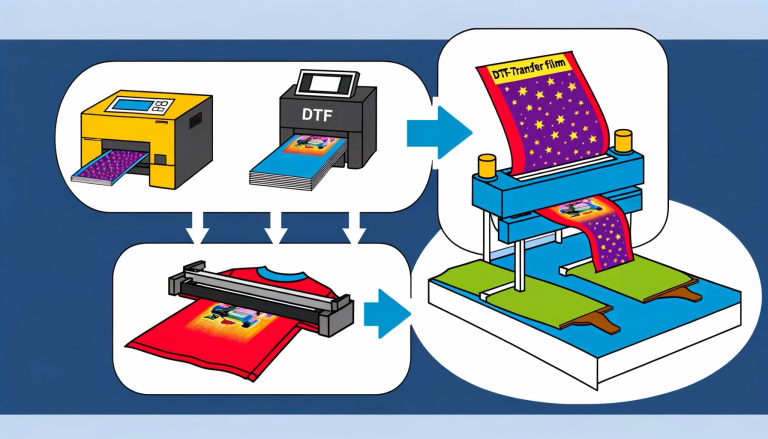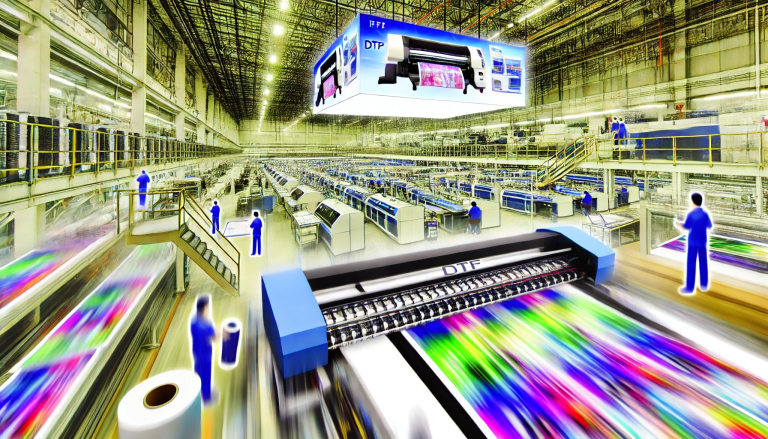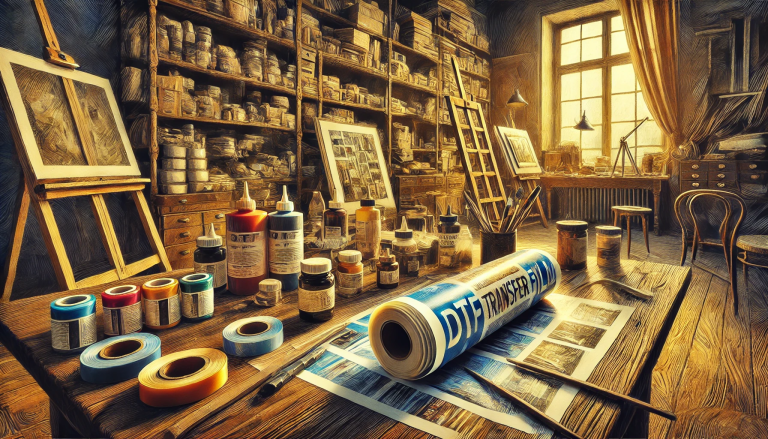“Bring Your Memories to Life with DTF Film Transfer!” -MAXDTF- DTF Film 13×19 Factory, DTF Digital Transfer Sheet Supplier, Made in China
Introduction
DTF film transfer is a process of transferring film to digital formats. It is a great way to preserve and share your memories captured on film. With DTF film transfer, you can convert your film into digital formats such as DVD, Blu-ray, and digital files. This process allows you to view your film on any device, from your computer to your television. DTF film transfer also offers a variety of options to customize your films, such as color correction, image stabilization, and more. With DTF film transfer, you can ensure that your memories are preserved for years to come.
Tips for Getting the Best Quality Results from Your DTF Film Transfer
1. Choose a Professional Service: When selecting a service to transfer your DTF film, it is important to choose a professional service that has experience in the field. Look for a service that has a good reputation and offers quality results.
- Clean Your Film: Before sending your film to be transferred, it is important to clean it. This will help ensure that the transfer process is as smooth as possible and that the results are of the highest quality.
- Use the Right Equipment: Make sure that the service you choose is using the right equipment for the job. This will ensure that the transfer is done correctly and that the results are of the highest quality.
- Check the Results: Once the transfer is complete, it is important to check the results. Make sure that the colors are accurate and that the sound is clear. If there are any issues, contact the service to have them corrected.
- Store the Results Properly: Once the transfer is complete, it is important to store the results properly. Make sure that the files are stored in a safe place and that they are backed up in case of any issues.
By following these tips, you can ensure that you get the best quality results from your DTF film transfer.
The Pros and Cons of Digital Transfer Film for Home Movie Projects
The digital transfer film is a relatively new technology that has revolutionized the way home movie projects are created. It allows users to transfer their old film reels to digital formats, making them easier to store and share. While this technology has many advantages, some drawbacks should be considered before using it.
Pros
One of the main advantages of digital transfer film is that it makes it easier to store and share home movies. By transferring the film reels to digital formats, users can store them on their computers or other digital devices, making them easier to access and share with others. Additionally, digital transfer film can help preserve the original quality of the film, as it can be transferred without any loss of resolution or color.
Another benefit of digital transfer film is that it can help to reduce the cost of home movie projects. By transferring the film reels to digital formats, users can avoid the cost of buying new film reels and the cost of developing them. Additionally, digital transfer film can help to reduce the time it takes to create a home movie project, as the transfer process is much faster than developing film reels.
Cons
One of the main drawbacks of digital transfer film is that it can be expensive. The cost of the equipment needed to transfer the film reels to digital formats can be quite high, and the cost of the digital storage devices needed to store the films can also be costly. Additionally, the cost of the software needed to edit digital films can also be expensive.
Another potential downside of digital transfer film is that it can be difficult to use. The process of transferring film reels to digital formats can be complicated, and users may need to have some technical knowledge to do it correctly. Additionally, the process of editing digital films can also be difficult, as users may need to have some experience with video editing software.
In conclusion, digital transfer film can be a great way to create home movie projects, as it can help to reduce the cost and time involved in creating them. However, it is important to consider the potential drawbacks of this technology before using it, as it can be expensive and difficult to use.
Exploring the Different Types of DTF Film Transfer Technologies
Digital film transfer technologies have revolutionized the way we watch movies. From the days of VHS tapes to the modern age of streaming services, the way we watch films has changed drastically. With the advent of digital transfer technologies, it is now possible to transfer files from one format to another with ease. This article will explore the different types of digital transfer technologies available and how they can be used to improve the viewing experience.
The first type of digital transfer technology is called telecine. This technology is used to transfer film from one format to another, such as from 35mm film to digital video. The process involves scanning each frame of the film and then converting it into a digital format. This process is often used to transfer films from the cinema to home video formats.
The second type of digital transfer technology is called digital intermediate (DI). This technology is used to transfer film from one format to another, such as from 35mm film to digital video. The process involves scanning each frame of the film and then digitally manipulating it to create a new version of the film. This process is often used to create special effects or color corrections for films.
The third type of digital transfer technology is called digital restoration. This technology is used to restore old films that have been damaged or degraded over time. The process involves scanning each frame of the film and then digitally restoring it to its original condition. This process is often used to restore classic films that have been damaged or degraded over time.
Finally, the fourth type of digital transfer technology is called digital mastering. This technology is used to create a master copy of a film that can be used for distribution. The process involves scanning each frame of the film and then digitally manipulating it to create a master copy. This process is often used to create a master copy of a film that can be used for distribution.
Digital transfer technologies have revolutionized the way we watch films. From the days of VHS tapes to the modern age of streaming services, the way we watch films has changed drastically. With the advent of digital transfer technologies, it is now possible to transfer files from one format to another with ease. This article has explored the different types of digital transfer technologies available and how they can be used to improve the viewing experience.
How to Choose the Right DTF Film Transfer Service for Your Needs
When it comes to transferring your old film to digital format, it is important to choose the right DTF film transfer service for your needs. There are a variety of services available, and each one offers different features and benefits. Here are some tips to help you choose the right service for your needs.
First, consider the type of film you need to transfer. Different services specialize in different types of film, so make sure the service you choose can handle the type of film you have. Some services may also offer additional services such as color correction, dust and scratch removal, and audio restoration.
Second, consider the quality of the transfer. Look for a service that offers high-quality transfers, as this will ensure that your film looks its best when it is transferred.
Third, consider the cost of the transfer. Different services offer different prices, so make sure you compare prices before making a decision.
Fourth, consider the turnaround time. Some services may offer faster turnaround times than others, so make sure you know how long it will take for your film to be transferred.
Finally, consider the customer service offered by the service. Make sure the service you choose is reliable and provides good customer service.
By following these tips, you can ensure that you choose the right DTF film transfer service for your needs. With the right service, you can ensure that your film is transferred quickly and accurately and that it looks its best when it is transferred.
The Benefits of Digital Transfer Film for Archiving and Preservation
The digital transfer film is an increasingly popular method for archiving and preserving important documents, photographs, and other materials. This technology offers several advantages over traditional methods of archiving and preservation, making it an ideal choice for those looking to protect their valuable items.
One of the primary benefits of digital transfer film is its longevity. The digital transfer film is designed to last for decades, if not centuries, without any degradation in quality. This makes it an ideal choice for archiving and preserving items that are of great importance or value. Additionally, digital transfer film is resistant to environmental factors such as humidity, temperature, and light, which can cause damage to traditional archiving methods.
Another advantage of digital transfer film is its versatility. This technology can be used to transfer a variety of materials, including photographs, documents, and other items. Additionally, digital transfer film can be used to transfer items of different sizes and shapes, making it a great choice for archiving and preserving items of all kinds.
Finally, digital transfer film is relatively inexpensive compared to other archiving and preservation methods. This makes it an ideal choice for those looking to protect their valuable items without breaking the bank.
Overall, digital transfer film is an excellent choice for archiving and preserving important documents, photographs, and other materials. Its longevity, versatility, and affordability make it an ideal choice for those looking to protect their valuable items for years to come.
Conclusion
The DTF film transfer process is an effective and efficient way to transfer film to digital formats. It is a cost-effective solution that can be used to preserve and restore old films, as well as to create new digital versions of existing films. The process is relatively simple and can be done quickly and easily. With the help of DTF film transfer, filmmakers can ensure that their films are preserved and accessible for future generations.





